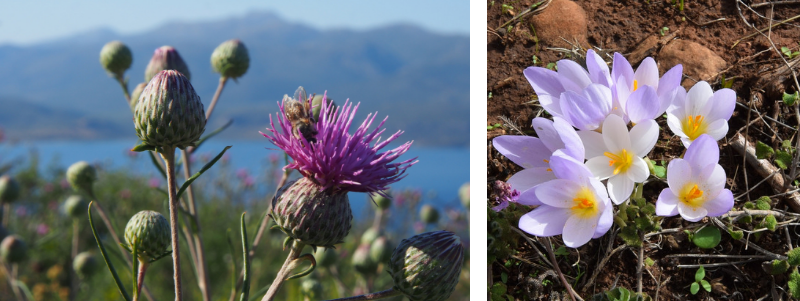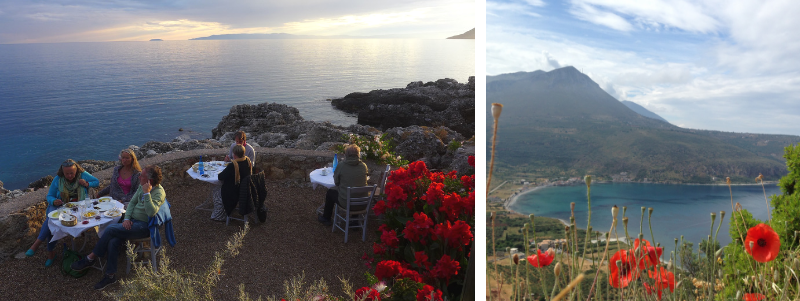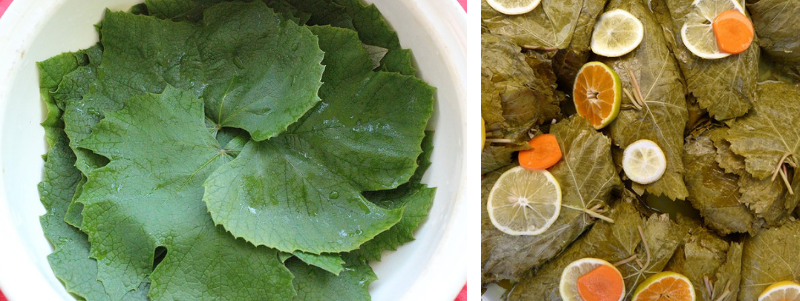Tour Leader and Kalamata local, Yorgos Paraskevopoulos shares six reasons he loves cycling Greece in May.
Weather
Spring is one of my favorite times in the Peloponnese. The month of May is when the sun shines brightly as warm weather starts to settle in. The entire country begins preparations for another busy summer while the number of tourists visiting in May is still small. The weather is mild enough that cycling is at its best, plus the sea is warm so you can reward yourself with a refreshing swim on any of the multiple sea-side stops on tour. There are plenty of fantastic beaches around, but Voidokilia, the last stop of the Sparta to Kalamata Plus! Pylos, is “out of this world” beautiful.
The ancient sites are at their most gorgeous: The archaeological site of Mystras, the tour starting point, is a fascinating all-year destination. However in May, this Byzantine fortress in the foothills of the Taygetos mountains is adorned with vivid colors of flowers and a stunning portrayal of natural light. Likewise, Nestor’s Palace (which you visit as part of the Plus! Pylos extended tour) is strikingly beautiful in May: the site’s natural setting and views towards the Gialova lagoon and the Ionian Sea are beyond fit for a king!
Wildlife
The sandy beaches of the Peloponnese are important nesting ground for the loggerhead sea turtle (Caretta caretta) that begin appearing along the shores of the Peloponnese in May in order to lay their eggs. They may not be easy to spot during their brief midnight landings, but their tracks on sandy beaches are often identifiable and sightings of adult females bobbing their heads near the coast are not unusual.
Also, Gialova lagoon is a real bird paradise: more than 270 species of birds have been counted there by the Hellenic Ornithological Society – the Greek partner of Birdlife International. Thousands of birds flying to Africa in autumn stop at the lagoon to rest and refuel for the last time before their long journey over the Mediterranean Sea and the Sahara desert. In spring, even as late as mid-May, they stop in this southern-most European wetland to rest and feed again. Herons and flamingos, ospreys, black-winged stilts, avocets, sandpipers, snipes, curlews and terns are just a few of the species one can admire here. (Gialova can be experienced as part of the Plus! Pylos extended tour.)
Amazing Stuffed Grape Leaves
May is the time of the year when grape vines have unfurled their leaves and are at that perfect moment between tender and tough. Greeks begin collecting them for one of the nation’s most traditional dishes or preserving them and storing them for later use. There are numerous variations of dolmathes, depending on the part of Greece you happen to be in. Join your tour leader, Yorgos at his home in Kalamata for a memorable hands-on experience of picking, preparing and stuffing grape leaves, before sitting down to a truly wonderful lunch. (On the Plus! Pylos extended tour only.)
 Wildflowers
Wildflowers
The Mani Peninsula is the central of the three south-pointing, finger-like peninsulas of the Southern Peloponnese. Barren and forbidding for the majority of summer, the Mani, in spring, is covered with swathes of wild flowers in every color imaginable. The ancient olive groves, wild hillsides, cliffs and churchyards are all ablaze with flowers, from blue vetches and pink cranes bills to intense yellow-green spurges, scarlet tulips, and dozens of species of orchids. Both tours, Sparta to Kalamata and Sparta to Kalamata Plus! Pylos, spend a total of four days on this popular flower-filled peninsula. If you have a fascination with wild flowers, Yorgos suggests investing in the Wild Flowers of the Mani: A Comprehensive Photographic Identification Guide for the Flowers of the Mani Peninsula in Southern Greece by Roger Marchant.
Intrigued? Check out our 8 and 12-day Cycling Ancient Greece itinerary options here.



